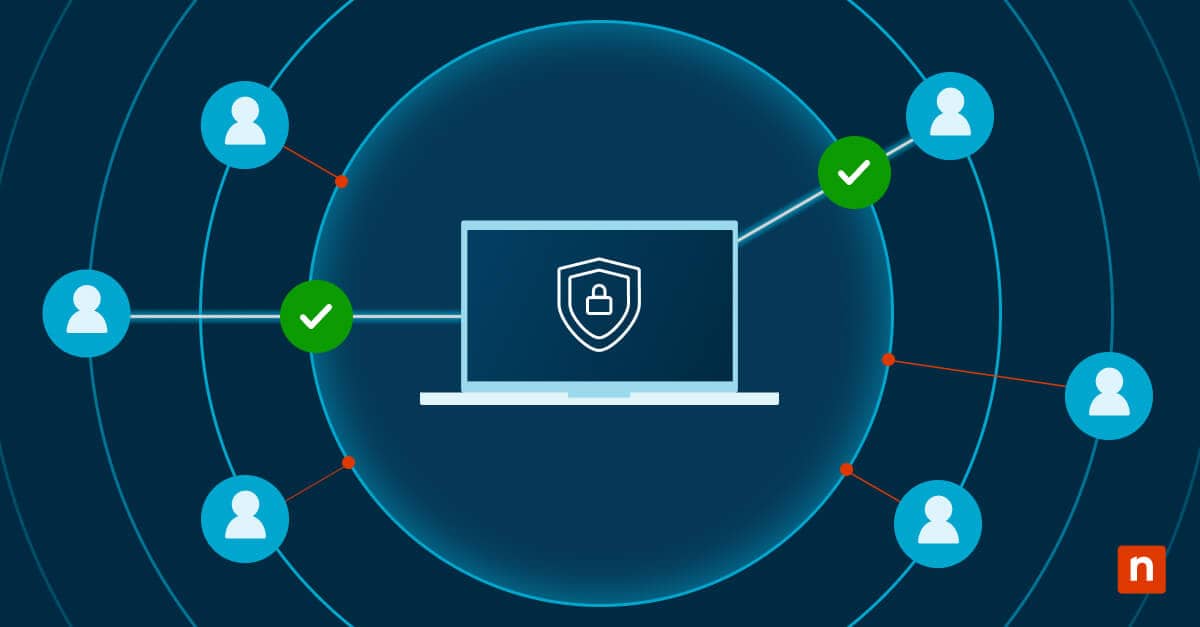Many IT experts use Windows PS1 files to automate tasks, configure systems, or manage workflows in Windows 10. However, executing it requires a complicated process of opening PowerShell manually. A good method to simplify it is adding a “Run PS1 File” option to the context menu, letting users to launch scripts in File Explorer, saving more time.
This adjustment allows users to easily do system maintenance, bulk automations, or troubleshooting time-sensitive issues. For instance, cybersecurity specialists can quickly deploy security patches, or system administrators can automate encrypted drive recovery. In this step-by-step guide, we will show you a faster and more intuitive way to use this tool.
How to add “Run PS1 File” to the Context Menu
Adding a “Run PS1 File” option to your Windows context menu allows you to access PowerShell scripts in seconds. Here are two ways you can achieve that:
Method 1: Using Registry Editor (manual method)
- Open the Run dialog box (Win + R), then type regedit to open Registry Editor.
- Go to: HKEY_CLASSES_ROOT\Microsoft.PowerShellScript.1\Shell.
- Right-click the Shell folder, select New, and then Key.
- Name the new key Run with PowerShell.
- Create a command subkey under it.
- Set subkey value to:
“C:\Windows\System32\WindowsPowerShell\v1.0\powershell.exe” -NoProfile -ExecutionPolicy Bypass -File “%1”
-
- This will bypass execution policies to seamlessly run scripts.
- Close the Registry to apply changes.
- The Run with PowerShell option will then appear when right-clicking .ps1 files.
Method 2: Using a pre-made Registry file (easier method)
- Open Notepad, then paste this code:
- Windows Registry Editor Version 5.00
[HKEY_CLASSES_ROOT\Microsoft.PowerShellScript.1\Shell\Run with PowerShell]
“Icon”=”powershell.exe”
[HKEY_CLASSES_ROOT\Microsoft.PowerShellScript.1\Shell\Run with PowerShell\command]
@=”\”C:\\Windows\\System32\\WindowsPowerShell\\v1.0\\powershell.exe\” -NoProfile -ExecutionPolicy Bypass -Command \”& ‘%1’\””
- Save the file as Add_Run_PS1_Context_Menu.reg.
- Double-click the saved .reg file and confirm the changes.
- The Run with PowerShell option will then appear when right-clicking .ps1 files.
How to edit or remove the “Run PS1 File” context menu entry
When you need to remove or make adjustments to the feature, modifying the context menu is pretty simple. Here’s how you can do it:
Editing the “Run with PowerShell” command
- Open Registry Editor (Win + R, and type regedit), then go to the address key created earlier (See Method 1 above).
- Double-click the (Default) value to edit:
- To run scripts with a specific execution policy, replace -ExecutionPolicy Bypass with -ExecutionPolicy RemoteSigned.
- To run scripts as administrator, include -Verb RunAs to the command.
- Close the Registry to apply changes immediately.
Removing the context menu entry
- Open the Registry Editor, then go to: HKEY_CLASSES_ROOT\Microsoft.PowerShellScript.1\Shell\Run with PowerShell
- Right-click Run with PowerShell, then select Delete.
- Restart Windows Explorer using Task Manager to apply changes.
Alternative methods for running PowerShell scripts
While adding a context menu can make script execution more convenient, other methods can offer flexibility when working on different workflows. Here are alternative ways you can run PowerShell:
Using PowerShell with administrator privileges
This method is ideal for scripts that need elevated rights. This requires opening PowerShell with administrator privileges.
- Right-click the Start menu, then select Windows PowerShell (Admin).
- In the script directory, go to: cd “C:\Path\To\Script”
- Execute the following script: .\YourScript.ps1
- If the script is blocked by execution policies, use this instead: Set-ExecutionPolicy RemoteSigned -Scope Process -Force
Using Task Scheduler to run scripts automatically
This tool can help schedule tasks like backups, log cleanup, or nightly maintenance in scripts.
- Open Task Scheduler (search taskschd.msc), then click Create Task.
- In the General tab:
- Name the task.
- Tick Run with highest privileges.
- In the Triggers tab, set a schedule for the task.
- In the Actions tab:
- Set Action to Start a program.
- For Program or script, enter: C:\Windows\System32\WindowsPowerShell\v1.0\powershell.exe
- For Arguments, add: -WindowStyle Hidden -ExecutionPolicy Bypass -File “C:\Scripts\Backup.ps1”
Creating a desktop shortcut for the PS1 script
This method is good for frequently used scripts, giving users a quick one-click access.
- Right-click the desktop, select New, and then Shortcut.
- For the location target, enter:
powershell.exe -ExecutionPolicy Bypass -Command “& ‘C:\Scripts\YourScript.ps1′”
- Name the shortcut.
- To have it run as administrator:
- Right-click the shortcut, then select Properties.
- Go to Advanced, then check Run as administrator.
Troubleshooting Common Issues
You can still encounter certain hiccups even when carefully setting up PowerShell scripts. Below are solutions to common problems you may face.
Issue: PowerShell script won’t run after adding to the context menu
- Run PowerShell (Win + R, then type powershell).
- Run script: Get-ExecutionPolicy
- If the script is Restricted, temporarily bypass for testing with: powershell.exe -ExecutionPolicy Bypass -File “your_script.ps1”
- Ensure the registry key command value (under HKEY_CLASSES_ROOT\Microsoft.PowerShellScript.1\Shell\Run with PowerShell) includes the full path to powershell.exe and the -File “%1” argument.
- Create a basic strict, like Write-Output “Hello World” to rule out syntax errors in the original file.
Issue: “Running scripts is disabled on this system”
- Open PowerShell as Administrator (See alternative methods above).
- Run script: Set-ExecutionPolicy RemoteSigned -Scope CurrentUser
- This will adjust the execution policy to allow scripts.
Issue: Context menu option not appearing
- Refresh Windows Explorer:
- Open Task Manager (Ctrl + Shift + Esc).
- Right-click Windows Explorer, then select Restart.
- Confirm registry edits:
- Double-check the key path: HKEY_CLASSES_ROOT\Microsoft.PowerShellScript.1\Shell\Run with PowerShell.
- If the path is missing, reapply the .reg file (see Method 2).
- Check for antivirus/firewall interference:
- Open security software.
- Temporarily disable blocking registry changes, then re-add the menu entry.
Best practices for managing PowerShell scripts
Improper management of PowerShell scripts can expose systems to risks. Try these best practices to optimize efficiency and security in this powerful tool:
Always review scripts before execution
Poorly written scripts can compromise systems or data. You can avoid this by:
- Using code signing: Sign scripts with a trusted certificate to verify authenticity, like Set-AuthenticodeSignature -FilePath “script.ps1” -Certificate $cert.
- Leverage tools: Endpoint management tools, like NinjaOne, can help make script deployment, ensuring you get alerted when certain conditions in it are met.
Use execution policies strategically
Execution policies can prevent accidental script runs, but note that these are not a full-on security barrier.
- Use RemoteSigned or AllSigned commands to block unsigned remote scripts.
- Scope policies narrowly, using -Scope CurrentUser to limit changes to the account.
- Re-enable restrictions after use: Set-ExecutionPolicy Restricted -Scope Process
Organize scripts in a dedicated folder
Centralize the storage of scripts to reduce clutter and simplify your system. Create a folder named C: \Scripts, then add it to PowerShell’s $env: Path. You can also add the folder to the Quick Access toolbar in File Explorer for a one-click navigation.
Backup Registry before modifications
Accidental edits in the Registry can also destabilize the system. Creating backup files of the Registry or some of its content can help ensure you can restore the system after a corruption.
- In the Registry Editor, right-click Run with PowerShell, then select Export.
Adding “Run PS1 File” context menu FAQs
Can I set PowerShell to always run as administrator from the context menu?
Yes, you can do this by modifying the registry command to include the -Verb RunAs flag:
- Edit the command registry key (see Section 2).
- Update the command to:
“C:\Windows\System32\WindowsPowerShell\v1.0\powershell.exe” -NoProfile -ExecutionPolicy Bypass -Command “& ‘%1′”
Is it possible to add more PowerShell options to the right-click menu?
- You can absolutely add other entries, such as Run as Admin or Edit Script. Here’s how you can do it:
- Duplicate the Run with PowerShell registry key under HKEY_CLASSES_ROOT\Microsoft.PowerShellScript.1\Shell.
- Rename it and update the command value to: “C:\Path\To\Code.exe” “%1”
How do I remove the “Run PS1 File” option if I no longer need it?
- Follow the steps in Section 2 above to remove the registry key.
Can I use this method in Windows 11 as well?
- Yes. The registry structure and PowerShell system are identical in Windows 10 and 11.
What happens if my script requires user input when run from the context menu?
- The PowerShell window might close instantly after executing, cutting off input prompts. You can fix this by doing the following:
- Adding -NoExit to the registry command: … -File “%1” -NoExit
- For scripts that need sustained interaction, run it manually in PowerShell or use Start-Sleep to pause execution.
Streamline Windows PS1 file execution
Adding a “Run PS1 File” context menu entry in Windows 10 simplifies script execution for system management, automation, or encrypted drive recovery. By including PowerShell directly in File Explorer, users gain a seamless way to run scripts.
While this feature boosts productivity, always pair it with secure execution policies and script reviews to avoid unintended risks. Balancing efficiency with caution ensures PowerShell remains a powerful and safe tool for your system.







